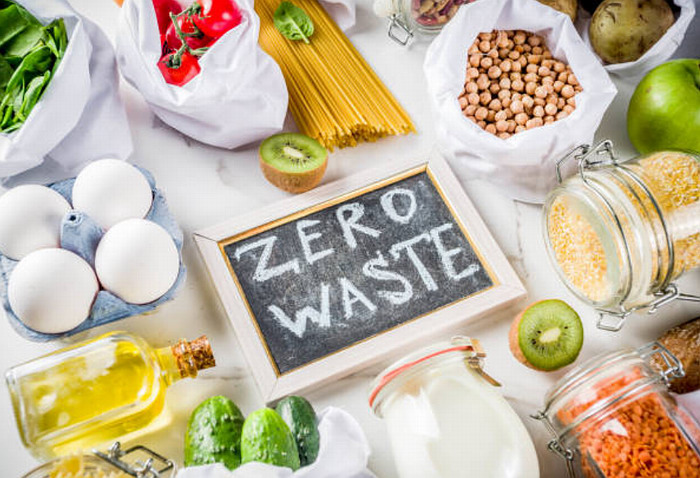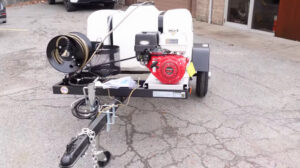Zero-Waste Living: Practical Tips for Beginners

Embracing a zero-waste lifestyle can feel both inspiring and overwhelming at first glance. The idea of sending nothing to the landfill is exciting, but for newcomers, it can raise questions like, “Where do I start?” and “Isn’t zero waste expensive or time-consuming?” The good news is that zero-waste living is less about perfection and more about making gradual, intentional swaps that suit your routine and budget. Below, you’ll find a step-by-step guide and practical tips to help you kick off your zero-waste journey with confidence.
1. Understand the Zero-Waste Philosophy
At its core, zero-waste living aims to prevent trash from being burned or buried by redesigning resource life cycles so that all products are reused. While the ultimate goal is to divert 100% of waste from landfills, every small change counts. Rather than stressing about absolute zero, focus on reducing what you consume, reusing what you already have, and recycling only when necessary.
2. Conduct a Waste Audit
Before making swaps, spend one week examining what you throw away:
- 1. Collect Your Trash: Keep all bins accessible—kitchen, bathroom, office, car.
2. Categorize: Sort waste into recyclables, compostables, and landfill-bound items.
3. Identify Patterns: Note repeat offenders—single-use plastics, packaging, paper towels, etc.
A waste audit highlights your biggest opportunities for reduction and helps you set realistic goals.
3. Start with the “Big Four” Disposable Items
Most people’s waste audits reveal that plastic bags, plastic bottles, food wrappers, and paper cups account for a large chunk of disposables. Tackling these first delivers the biggest impact:
- Reusable Shopping Bags: Keep a foldable tote or canvas bags in your car or purse.
- Water Bottles & Coffee Cups: Invest in an insulated stainless-steel bottle and a travel mug. Many cafés even offer discounts for BYO cups.
- Bulk Shopping & Loose Produce: Switch to stores that allow you to fill your own containers for grains, nuts, spices, and produce. Stash a set of glass jars or cloth produce bags in your pantry or car.
- Snacks on the Go: Prep snacks in reusable silicone pouches, beeswax wraps, or small glass jars instead of single-serve packaging.
4. Reduce Food Waste in the Kitchen
Food waste constitutes a major part of household waste. Here’s how to shrink your food footprint:
- Meal Planning: Map out weekly meals, shop with a list, and resist impulse buys that go bad.
- Proper Storage: Use clear glass containers to see leftovers. Label with dates to avoid mystery science experiments in your fridge!
- Composting: If you can’t eat it, compost it. Even if you live in an apartment, there are countertop compost bins and municipal pickup programs.
- Creative Cooking: Turn wilting veggies into soups or stir-fries. Don’t toss bread heels—make breadcrumbs or croutons.
5. Swap Single-Use for Reusable in the Bathroom
The bathroom is another hotspot for disposable items. Consider these easy replacements:
- Solid Shampoo & Conditioner Bars: Last longer than liquid bottles and often come package-free.
- Bamboo Toothbrushes: Biodegradable handles that won’t linger in landfills for centuries.
- Safety Razor or Refillable Razors: Ditch plastic disposable razors for an aluminum safety razor or a handle you can refill with recyclable blades.
- Reusable Cotton Rounds & Cloth Towels: Replace cotton balls and paper towels with washable cloth pads and hand towels.
- Refillable Soap Dispensers: Bulk-buy liquid soap or hand wash and refill glass dispensers. Many co-ops and zero-waste shops offer soap refills.
6. Conscious Consumerism and Mindful Purchasing
Zero-waste living isn’t just about what you throw away—it’s about changing your shopping habits:
- Buy Less: Ask yourself, “Do I really need this?” before every purchase.
- Choose Durable Over Disposable: Pick products designed to last longer (cast-iron cookware, stainless-steel utensils, natural-fiber clothing).
- Support Ethical Brands: Patronize companies with transparent supply chains and minimal packaging.
- Regift, Donate, or Buy Secondhand: Whether furniture, clothes, or electronics, secondhand options reduce demand for new production.
7. DIY and Upcycling Projects
One person’s trash is another’s treasure. Get creative with DIY and upcycling:
- Make Your Own Cleaners: Baking soda, vinegar, and essential oils can substitute for many household cleaners. Store them in amber glass spray bottles.
- Upcycle Glass Jars: Use empty jam or pasta sauce jars for pantry storage, pen holders, or vases.
- Sew Your Own Produce Bags & Napkins: A simple sewing machine project can replace plastic bags and paper napkins.
- DIY Beeswax Wraps: Create reusable food wraps from cotton cloth and melted beeswax.
8. Navigate Recycling Like a Pro
Recycling rules can vary widely by location. To make recycling effective:
- 1. Check Local Guidelines: Visit your municipality’s website or call your waste management provider.
2. Clean and Dry: Rinse containers—contamination can spoil whole batches.
3. Know Your Symbols: Learn which plastics your area accepts; many curbside programs stop at #1 and #2 plastics.
4. Specialty Recycling: Batteries, electronics, and textiles often require drop-off at specific centers or events.
9. Embrace Zero-Waste Habits Outside the Home
Zero-waste living goes beyond your front door. Here are ways to stay plastic-free on the move:
- Pack a “Go Bag”: Include utensils, a straw, napkin, and a container to avoid single-use when eating out.
- Refill Stations: Use apps like Refill (or search online) to find water refill stations in your city.
- BYO Everything: From picnic blankets to reusable shopping tote, make it habitual to carry supplies.
- Gift Zero-Waste: For birthdays or holidays, choose experiences (concert tickets, cooking classes) or sustainable gifts (succulents, houseplants, beeswax candles).
10. Build Community and Accountability
Zero-waste living is easier—and more fun—when shared:
- Join Local Groups: Many cities have zero-waste or plastic-free meetups. You can swap goods, tips, and support each other.
- Challenge Friends & Family: Host a “no-waste week” challenge and compare results.
- Share Your Progress: Document your journey on social media. Your story might inspire others.
11. Track Your Impact and Celebrate Wins
Keeping track of your waste reduction milestones motivates you to stick with the habit:
- Use a Journal or App: Record what you diverted from landfill each week. Apps like “Zero Waste Home” can help.
- Set Monthly Goals: “This month, I’ll eliminate plastic bags”; “Next month, I’ll cut food waste by 50%.”
- Celebrate Small Victories: Treat yourself for hitting milestones—a local coffee in your travel mug, a secondhand book, or a nature hike.
12. Overcoming Common Challenges
- Feeling Overwhelmed: Tackle one room or habit at a time.
- Perceived Higher Costs: Many reusable items pay for themselves over time—think cloth napkins versus paper.
- Travel & Emergencies: Pack extra reusables or keep a backup kit in your travel bag.
- Relapse Days: Don’t aim for perfection. If you slip up, reflect on how to avoid it next time and move forward.
Conclusion
Zero-waste living is a journey, not a destination. Every swap you make—no matter how small—adds up to significant environmental benefits. By starting with the “low-hanging fruit,” like ditching single-use plastics and composting kitchen scraps, you’ll build momentum. From there, expand your efforts into mindful purchasing, DIY projects, and community-building. Remember, progress over perfection: even reducing your waste by 25% dramatically lessens your footprint.
As you incorporate these practical tips into daily life, you’ll find zero waste becomes less of a chore and more of an empowering, creative lifestyle that benefits both you and the planet. Good luck, and happy reducing!
Article by Dreamstime







